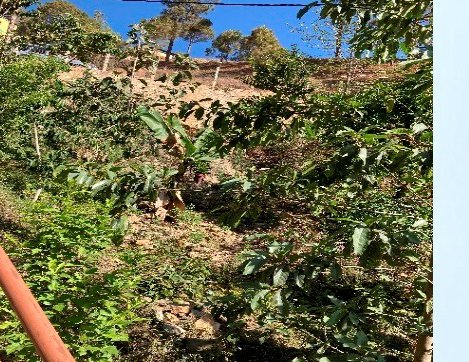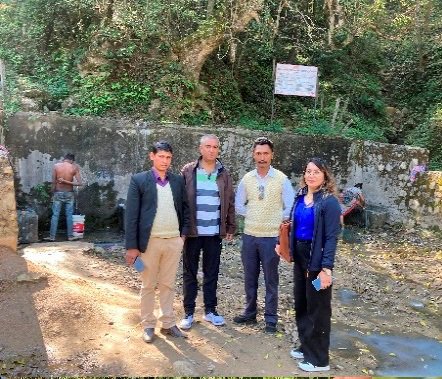
Cabinet approval of the National Adaptation Programme of Action (NAPA) in September 2010, Climate Change Policy in February 2011 and National Framework on Local Adaptation Plan for Action (LAPA) in November 2011 opened avenues to implement NAPA-prioritised adaptation actions in Nepal. The Nepal Climate Change Support Programme (NCCSP) - the first project for NAPA implementation - was formulated to implement people-centric adaptation actions and to build adaptive capacity of the most climate vulnerable communities in 14 districts of West Nepal with the grant assistance from UK Department for International Development (DfID), European Union and the Government of Cyprus. This project focussed to prepare and implement LAPAs and provided adaptation services to at least 50 percent of women of the total beneficiaries. LAPAs were prepared and implemented for about 100 local bodies with people's participation. Experience and learning of this five-year 'on-budget and on-treasury' Project encouraged both the Governments of Nepal and UK to implement its second phase in 42 municipalities of 3 Provinces - Karnali, Sudurpashchim, and Lumbini Provinces. After a decade of experience in implementing 'on-budget and on-treasury' modality, it sounds appropriate to share reasons for the adoption of this approach while finalising NCCSP formulation process in 2012.

In 2008, the Government of Nepal (GoN) received US$ 0.2 million from Least Developed Country (LDC) Fund (each LDC received equal amount from LDCF) to prepare NAPA through UNDP - the GEF Implementing Agency (IA). GoN requested UNDP to function as the GEF IA for this project. GoN also received US$ 0.885 million from DfID and US$ 0.2 million from the Government of Denmark to prepare NAPA and implement other climate change activities. These funds were channelled through UNDP. 'Unwanted behavior' (like a fund giver) of the UNDP officials engaged in supporting for NAPA preparation called for exploring solutions to internalise adaptation actions in Nepal's development planning. This led to the adoption of 'on-budget and on-treasury' modality for NCCSP implementation. This was 1800 turn on fund channelling from development partners on climate change adaptation. Development partners provided fund directly to the Government, and GoN allocated and disbursed part of the fund to the 'service providers' for technical services. During 2013-2017 period, UNDP provided services to implement NCCSP phase I and in 2019-2023, Matt MacDonald is providing technical support by following the same modality - 'on-budget and on-treasury'. Continuation of this modality informs that it has worked well, internalised climate change adaptation into government planning process, enhanced government 'ownership' and has slowly established 'proponent-driven' approach in implementing climate change programmes and projects. On 16 May 2023, the Ministry of Forests and Environment uploaded a notice that calls for the submission of a concept note of a Project to utilize GEF 8/LDCF allocation for Nepal. The notice clearly mentioned that Project should be executed through 'on-budget, on-treasury' funding modality.
The NCCSP-1 laid the foundation to prepare and implement LAPAs to help climate vulnerable communities to adapt to and build resilience to climate change impacts and integrate adaptation options into local planning processes through orientation, exposure, information sharing and building individual and institutional capacities. In a workshop, information shared by the Regional Climate Coordinator on 6 April 2023 at Birendranagar, Surkhet informs support of the NCCSP-2 in 42 municipalities to mainstream climate resilience in the long-term development planning, improve and manage climate finance by municipalities in a transparent manner, promote resilient and inclusive infrastructure, and provide services effectively targeting to nearly 0.5 million climate vulnerable communities. This Project aims, inter alia, to strengthen capacity to plan, design, implement and sustain climate investments at different levels, advance climate resilient plans and infrastructure in water, agriculture, and forestry sectors for implementation by municipalities, support to municipalities to manage climate finance, and generate and disseminate knowledge and learning for evidence-based planning and decision-making.
It seems that the Project has focussed its activities in developing LAPAs, preparing climate profiles and hazard atlas, generating science-based information, promoting construction, monitoring & supervision, and scaling-up its success activities in Palikas to advance climate smart agriculture linked with livelihoods, infrastructure for disaster management such as flood & landslide control, and slope stabilisation, and support in generating clean energy & developing watershed management plan etc. Mohan Dev Joshi, then Province Secretary at the Ministry of Industry, Tourism, Forests and Environment, Karnali Province specifically mentioned drinking water supply in drought area - the Retcha of Surkhet with support from NCCSP, and Project success lies in its bottom-up planning. In a nutshell, mainstreaming of climate change adaptation through LAPA framework into local periodic plans and programmes would contribute to internalise and institutionalise adaptation planning and implementation to address the needs of the climate vulnerable communities.
Nepal has pioneered to preparing and implementing LAPAs and institutionalising 'on-budget' and 'on-treasury' modality. Several projects have prepared LAPAs, and few projects have implemented them. Knowledge and learning from the LAPAs implementation Project offer convincing results for replication and scaling-up by selecting location-specific adaptation options, knowing performance of adaptation measures and technologies, and further understanding the possibilities to build adaptive capacity. It urges to prepare and implement practical and easy-to-implement climate resilient and gender-responsive LAPAs for municipalities by 2030 as targeted in the Second Nationally Determined Contribution (NDC). LAPA preparation and implementation in all 753 Local levels would greatly contribute to minimise adverse impacts of climate change on human beings and natural resources. The GWP Nepal/JVS support in preparing gender responsive LAPAs for Kaligandaki and Chhatrakot Rural Municipalities would also offer learnings for future actions. Depending upon the climate vulnerabilities of the area, Nepal should sufficiently promote nature-based solutions and/or ecosystem-based adaptation interventions.
I had the opportunity to see local people's prioritised two adaptation sites - road-induced unstable slopes stabilisation, and water source protection works - in Dailekh in the first week of April this year. Engagement of local people in planning, implementing, and managing adaptation interventions provides hope for reducing climate impacts on local people and natural resources. Existing adaptation works also inform to concentrate in generating science-based information to confidently prove that existing challenges and vulnerabilities are due to climate change. Such information would greatly contribute to develop realistic funding proposal to further implement site-specific adaptation interventions.
Being involved in preparing NAPA, Climate Change Policy and LAPA framework during 2008-2011, and in conceptualising NCCSP to implement NAPA prioritised adaptation options, progress made in NCCSP-1 and II offers hopes to: (i) building adaptive capacity of the climate vulnerable communities and making natural resources resilient; (ii) orienting and re-orienting adaptation and non-adaptation communities for planning and implementation; (iii) generating, documenting and sharing knowledge, experiences and learning; (iv) institutionalizing 'ownership'; and (v) accelerating scaling-out and scaling-up adaptation actions in Nepal's climate vulnerable areas.
Former Joint-Secretary (Tech) and Chief of Climate Change Management Division, then Ministry of Environment, upretybk@gmail.com

Batu Uprety
Former Joint-Secretary and Chief of Climate Change Management Division, Ministry of Environment (then), and former Team Leader, National Adaptation Plan (NAP) formulation process. E-mail: upretybk@gmail.com
- Adaptation Journey Through LAPAs
- Jul 11, 2024
- LAPA Internalised As Conceived In 2011
- Jun 12, 2024
- Revisiting The EIA Report
- May 15, 2024
- Dialogue On Mountains And Climate Change Planned
- Apr 19, 2024
- Institutional Response And Leadership on Climate Negotiations
- Mar 28, 2024
















